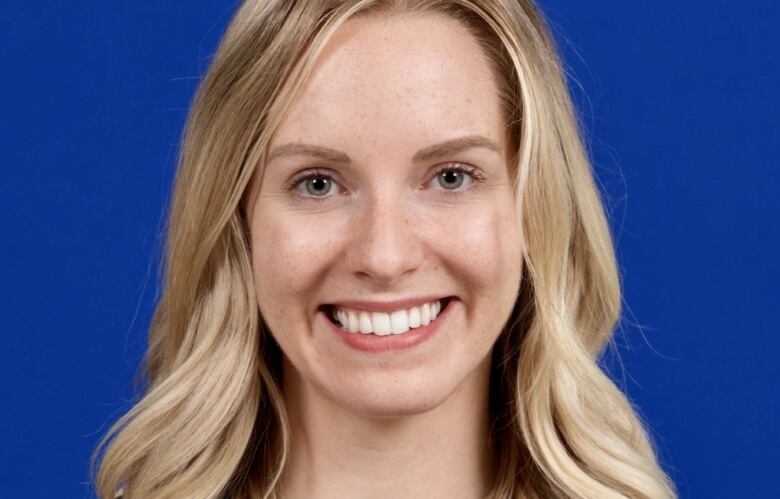Facial expressions and gestures: How communication has changed in masked times
'One of the things that's come out of this is just how adaptive we are as a social species'

A year of adapting to lockdowns and job losses,isolation andseparation, hardships and home offices, masking up and dressing down has also seen a tectonic shift in how we simply say hello.
Face masks have presented the challenge of trying to communicate with only half of a face showing. The mouth, which reveals so much, is hidden away.
So we've leaned on the mechanics of mimetheatre overly accentuated gestures and facial expression.
"I think one of the things that's come out of this [pandemic] is just how adaptive we are as a social species," said Dr. Sarah Rigby, an assistant professor at the University of Manitoba's department of clinical health psychology.
Her research relates to how people visually perceive the emotions of others, and how they experience and respond to their own emotions.
"When we're not able to kind of use facial information in the same way as we normally would, we compensate in other ways like the raising of eyebrows, a nod or more emphasizing of the eye crinkles when smiling or things like that," Rigby said.

Back in grad school, Rigby studied face processing and what happens when we can only seepart of the face versus the whole.
It's like trying to express tone in a text message the intent can be easily misinterpreted.
"It is really important for us to be able to communicate emotions to one another and obviously our faces are really important parts of social interaction," Rigby said.
Happinessis recognized quicker when we can see a smiling face. For other emotions, like anger, we rely more on the upper face, noticing a furrowed brow to understand how others are feeling, she said.
"So it is harder to communicate joy or happiness right now to one another as we cross the street or just walk past other folks."

Body language and voice tone when we have time to interact have taken on a keyrole in the absence of other social cues.
"We're able to still use those to let people know how we feel. It helps us to recognize, if we can't in the normal ways, that someone is smiling," said Rigby, who particularly welcomes the heightenedattention on smiling from theeyes.
Research shows the lines that arch aboveour cheeks from the corners of our eyes are viewed as a more sincere indicator of happiness. They come out when we are laughing or overjoyed.
It's called a Duchenne smile, afterFrench anatomist Guillaume Duchenne, who studied emotional expression by stimulating various facial muscles.
Those lines put people more at ease than a quick pinched smile that doesn't shift other parts of the face.
'These are strange times' so be kind
Rigby admits encouraging people to be more expressive or extroverted is easier said than done.
Merely making eye contact is a panic-inducing task for the self-conscious and some on the autism spectrum.
That's the case forAvi Chaudhury's son, who finds it "incredibly difficult" to look directly at a stranger. Some people initially take offence to thatbut once Chaudhury is able to explain his son's situation, their demeanour quickly changes to one of kindness, he said.
Don't take itpersonallyif you come across somebody who doesn't reciprocate your greeting, said Chaudhury, who is also theexecutive director of the Toronto-basedCanadian Autism Society.

"These are strange times and people are sometimes concerned with certain behaviour, but when you try and provide that explanation, things become a little easier," he said, urging people to just be kind.
"You never know what the other person's going through. Right? Before you take offence to somebody's behaviour, understand thatpeople can be different, or that they can have a bad day or they can have a bad moment."
So don't stopgreeting people with that amplified affection. Often it will land with them later, when they can appreciate it, and it will make a difference, Chaudhury said.
Anything that puts more happiness out there at a time when people are anxious and stressed is a good thing, said Rigby, who hopes some of the new habitswe've created will persistonce the days of masks are behind us.
"People are just going to be so excited to be able to use their whole faces to communicate again, butI think just nodding to people as you walk by, or even waving or things like that, arepro-social gestures to continue with," she said.
"As a psychologist, I know the importance of verbal communication for emotions and I think that that'll be a good thing for us to continue with."












_(720p).jpg)


 OFFICIAL HD MUSIC VIDEO.jpg)
.jpg)



























































































